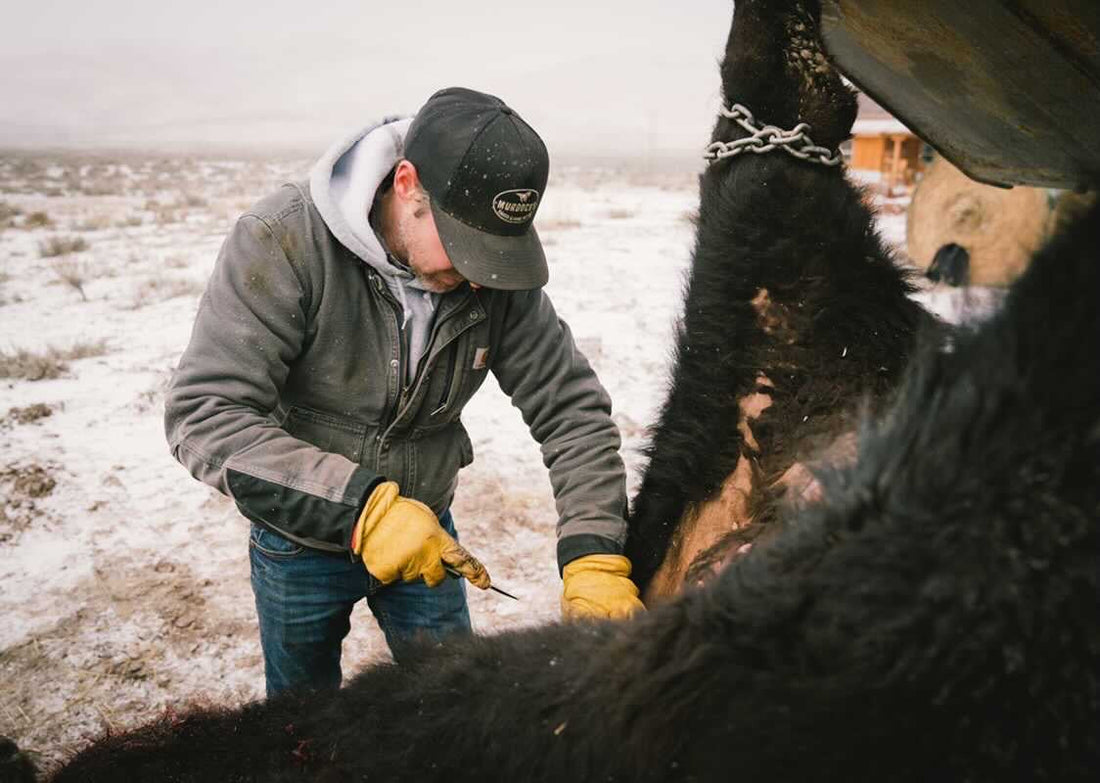
The 5 Types Of Glove Leathers
Share
Best Glove Leather
When it comes to choosing the best leather for work gloves in 2024, several options cater to diverse needs and preferences. Cowhide, pigskin, and goatskin remain popular choices, each offering unique advantages.
However, with advancements in technology and sustainability considerations, newer options like sheepskin, deerskin, buffalo leather, and horsehide are gaining attention. Ultimately, the choice of glove leather will depend on the specific needs and preferences of the wearer.
Why choose Leather Work Gloves?
If you're in need of gloves for work, leather is a durable and reliable material to consider. Depending on your needs, you can choose from heavy-duty options for professional use or lighter weight gloves for DIY projects. This guide will provide you with the essential information you need to know when selecting the perfect glove leather.
Understanding the glove leather industry isn’t as simple as you think. We’ve got you covered. Here are some types of leather gloves.
Best Leather for Work Gloves
1. Pigskin Glove Leather
Pigskin leather may remind you of football, but it also makes great working gloves. While less economical than cowhide, dense pigskin is more durable and breathable. The biggest benefit of pigskin glove leather is that it stays softer after getting wet than other types of leather due to its porous texture.
Pigskin leather gloves offers the greatest breathability due to the porous texture of the hide. It becomes softer with use and withstands moisture without becoming stiff. And the material can be laundered without losing its shape or function.
Pigskin leather has been so popular for work gloves due to its extraordinary characteristics. It is both incredibly durable while being supple and soft. The leather will also grow softer the more you wear it.
2.
Goatskin Glove Leather
Goatskin is often considered the strongest type of leather for gloves. It’s tough and abrasion-resistant but also thin enough to offer great dexterity. Plus, the natural oil in goat-skin leather makes it soft, flexible, and more water-resistant than many other types of leather.
Goatskin is one of the most comfortable types of leather work gloves and one of the strongest. Goat skin is an excellent choice for making gloves because it is very durable. This makes it ideal for people who work with their hands often. It is also easy to clean and maintain. Great working gloves.
3.Cowhide Glove Leather
Cowhide is the most common leather and the oldest type of leather used for gloves and other products. It is what comes to mind for most people. It comes from cows that were raised specifically for their hides. These animals are not killed for their meat, so cowhide leather is considered a sustainable resource.
It is considered the “go-to” leather because of its durability and great value. It is also easy to care for and resistant to dirt and water.
Typically used in lower price gloves, cowhide leather is quite thick for a day or evening glove but is very suitable for those who either lose their gloves or want some winter protection.
Cowhide leather is super strong and abrasion-resistant, making some of the most durable leather work gloves on the market. It creates a moderately priced, comfortable glove. It tends to be heavier and less breathable than goat-skin, but it’s also warm and heat resistant.
4. Buffalo Glove Leather
Buffalo leather is made by taking the skin off an animal that lives in the wild. This means that there is no need to kill the animal before harvesting its skin. In addition, buffalo leather is much cheaper than pigskin. It is softer than goat skin and easier to care for.
Buffalo leather gloves are extremely durable and have superior abrasion resistance. While it resists puncture better than most other types of glove leather, it is also very breathable. Buffalo leather is similar to cowhide but considered more flexible and allows more dexterity.
Buffalo leather is the newest type of leather used for creating gloves. It comes from bison that live in the wild. Bison are not killed for their hides, so buffalo leather is also considered a sustainable resource. However, because bison are hunted for their meat, buffalo leather is more expensive than other types of leather.
5. Deerskin Glove Leather
Deerskin is another soft leather. Despite being strong and naturally abrasion-resistant, this leather gets softer after getting wet as it is porous like pigskin. It also conforms to the hand for improved flexibility. Its lightweight properties make it one of the best leathers for temperature regulation.
If you are looking for a more durable option, then deerskin glove is probably the right choice for you. These leather work gloves are made from the soft underbelly of deer. They are extremely durable and will last longer than other options.
It is more flexible than cowhide and also the warmest of leathers.
However, these work gloves are much harder to clean than goatskin gloves. You should use soap and water to wash them regularly. Check out our article here on how to clean leather work gloves.
Very rugged and coarse, but offering decent strength, deerskin gloves are sturdy and show a more pronounced grain making it popular with outdoorsy folks who hike in cold climates.
Check out our collection of Deerskin Work Glove here.





